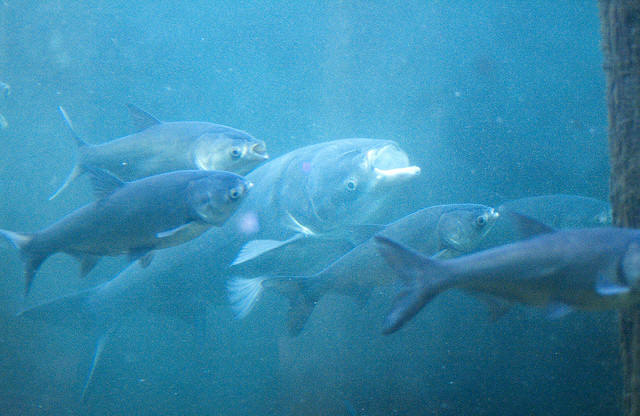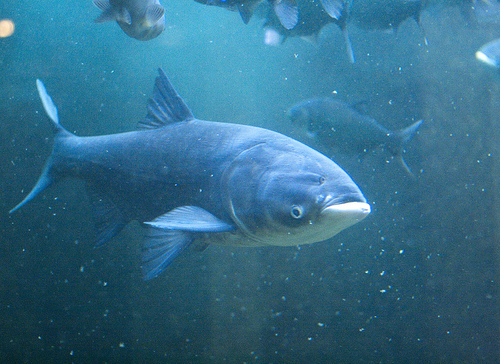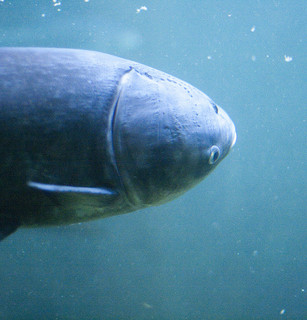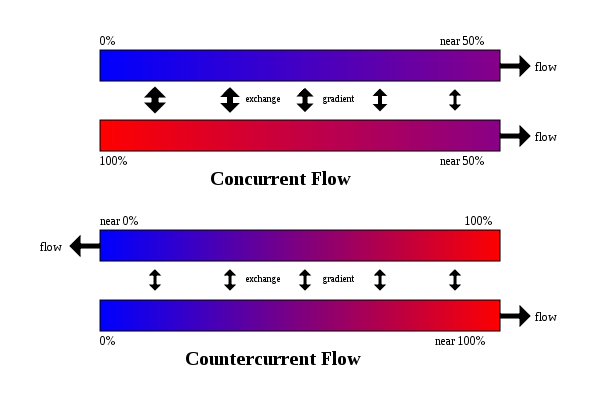Nutrition
If there is one thing for certain about Bighead carp it is their large desire to feed!
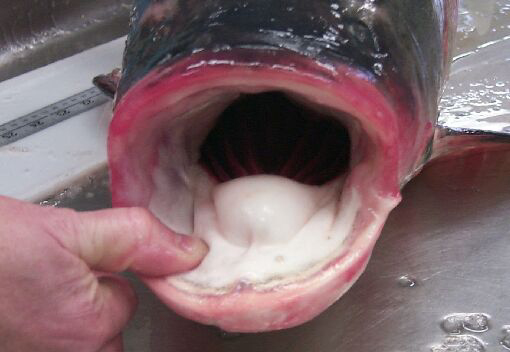 The Bighead carp is classified as heterotrophic, which basically
means that they must consume another organism in order to obtain
nutrients and energy. If you would like to see an example of a
heterotrophic organism click
here. The most common organisms that are eaten by by the
Bighead carp are zooplankton and algae. They are also known
to feed on aquatic insects and other larval forms of organisms.
One common type of algae that they are well known for feeding on is the
blue-green algae.
The Bighead carp is classified as heterotrophic, which basically
means that they must consume another organism in order to obtain
nutrients and energy. If you would like to see an example of a
heterotrophic organism click
here. The most common organisms that are eaten by by the
Bighead carp are zooplankton and algae. They are also known
to feed on aquatic insects and other larval forms of organisms.
One common type of algae that they are well known for feeding on is the
blue-green algae.
Want to see an example of blue-green algae? Click
here to find out!
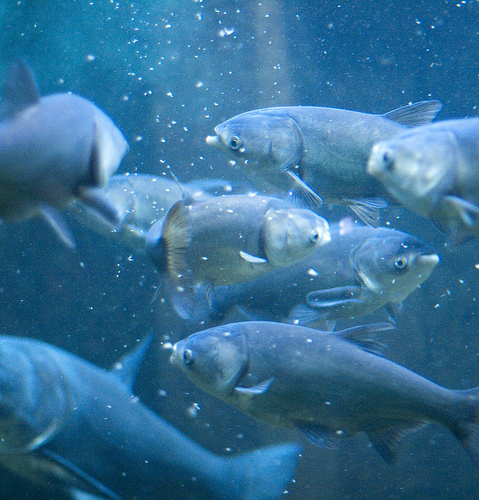
How do Bighead carp acquire these tiny forms of food? These fish have exploited the methods known as filter feeding in order to obtain their food. Filter feeding is the straining of water in order to obtain tiny organisms to consume. In order to filter the zooplankton and algae Bighead carp will use gill rakers. Gill rakers are very long and condensed comb-like structures which allow water to pass through, but still trap the food source to be eaten. Bighead carp have a large appetite and must take in many of these small organisms. They must expend some energy in order to obtain food, but lucky for Bighead carp it is fairly easy to filter feed. Once food is captured what happens next? These fish do the common procedure of ingest and then digest. This species have a straight through digestive tract.
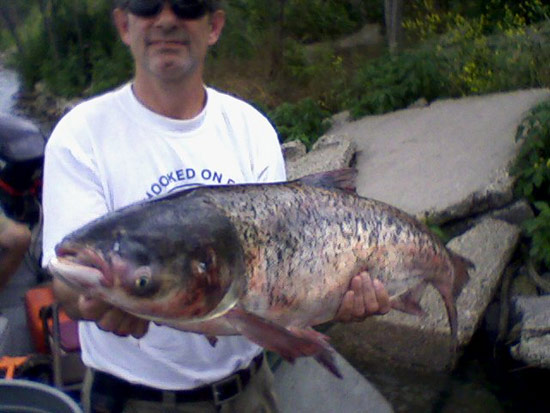 There is one thing unique to
this digestive tract though. Bighead carp do not have a true
stomach so digestion and intake occurs in the intestines. The lack
of a stomach prevents efficient digestion so much of the food source
taken in is not actually absorbed. This is why the Bighead carp is
always eating, so there is a constant flow of food for the fish to
digest to compensate for inefficiency in nutrient uptake. This
explains why Bighead carp appear to have such large appetites and
"out-eat" other aquatic organisms competing with them.
There is one thing unique to
this digestive tract though. Bighead carp do not have a true
stomach so digestion and intake occurs in the intestines. The lack
of a stomach prevents efficient digestion so much of the food source
taken in is not actually absorbed. This is why the Bighead carp is
always eating, so there is a constant flow of food for the fish to
digest to compensate for inefficiency in nutrient uptake. This
explains why Bighead carp appear to have such large appetites and
"out-eat" other aquatic organisms competing with them.
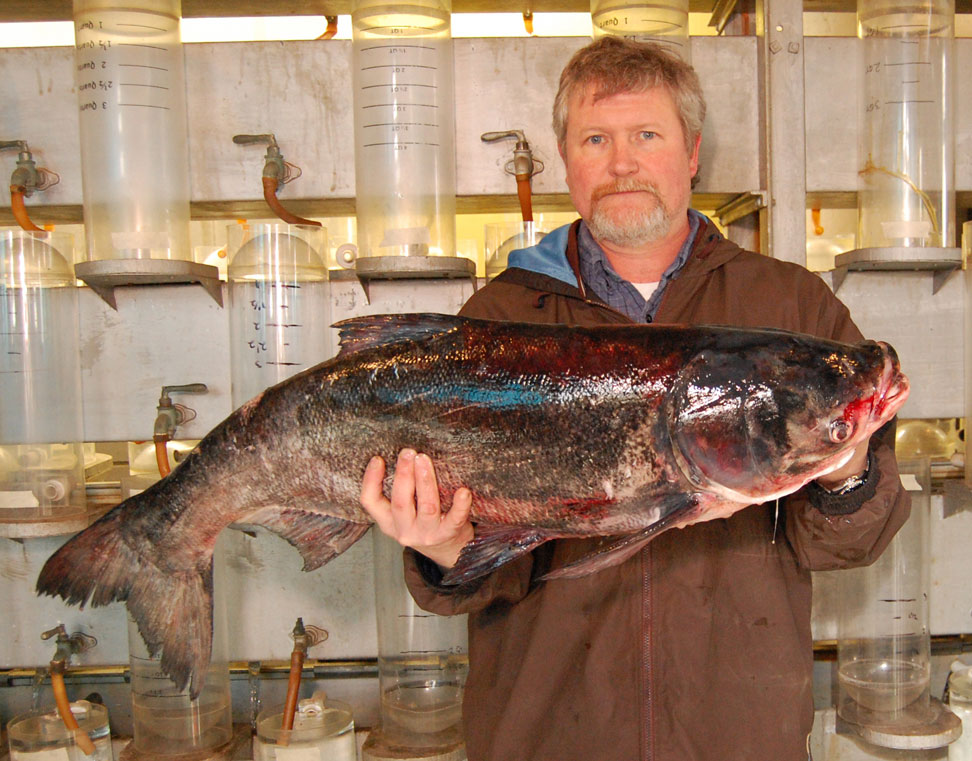 An issue that Bighead carp and many other multicellular organisms
need to overcome is the supply and demand of cells in a large volume.
As an effect of having larger volume, these organisms must have a system
to transport nutrients, gas, and waste products between cells.
This system is known as the circulatory system. The circulatory
system in Bighead carp is classified as a closed system, where blood
never leaves the circuit. The advantage to a closed system is a
faster and more efficient exchange. What makes up this organisms
circulatory system? In Bighead carp, like other fish, a
two-chambered heart pumps the blood to the gills where oxygen diffuses
into the blood, then the oxygenated blood is taken to the rest of the
cells of the body, and finally the deoxygenated blood continues back to
the heart to be pumped through the single circuit again. The
two-chamber
An issue that Bighead carp and many other multicellular organisms
need to overcome is the supply and demand of cells in a large volume.
As an effect of having larger volume, these organisms must have a system
to transport nutrients, gas, and waste products between cells.
This system is known as the circulatory system. The circulatory
system in Bighead carp is classified as a closed system, where blood
never leaves the circuit. The advantage to a closed system is a
faster and more efficient exchange. What makes up this organisms
circulatory system? In Bighead carp, like other fish, a
two-chambered heart pumps the blood to the gills where oxygen diffuses
into the blood, then the oxygenated blood is taken to the rest of the
cells of the body, and finally the deoxygenated blood continues back to
the heart to be pumped through the single circuit again. The
two-chamber
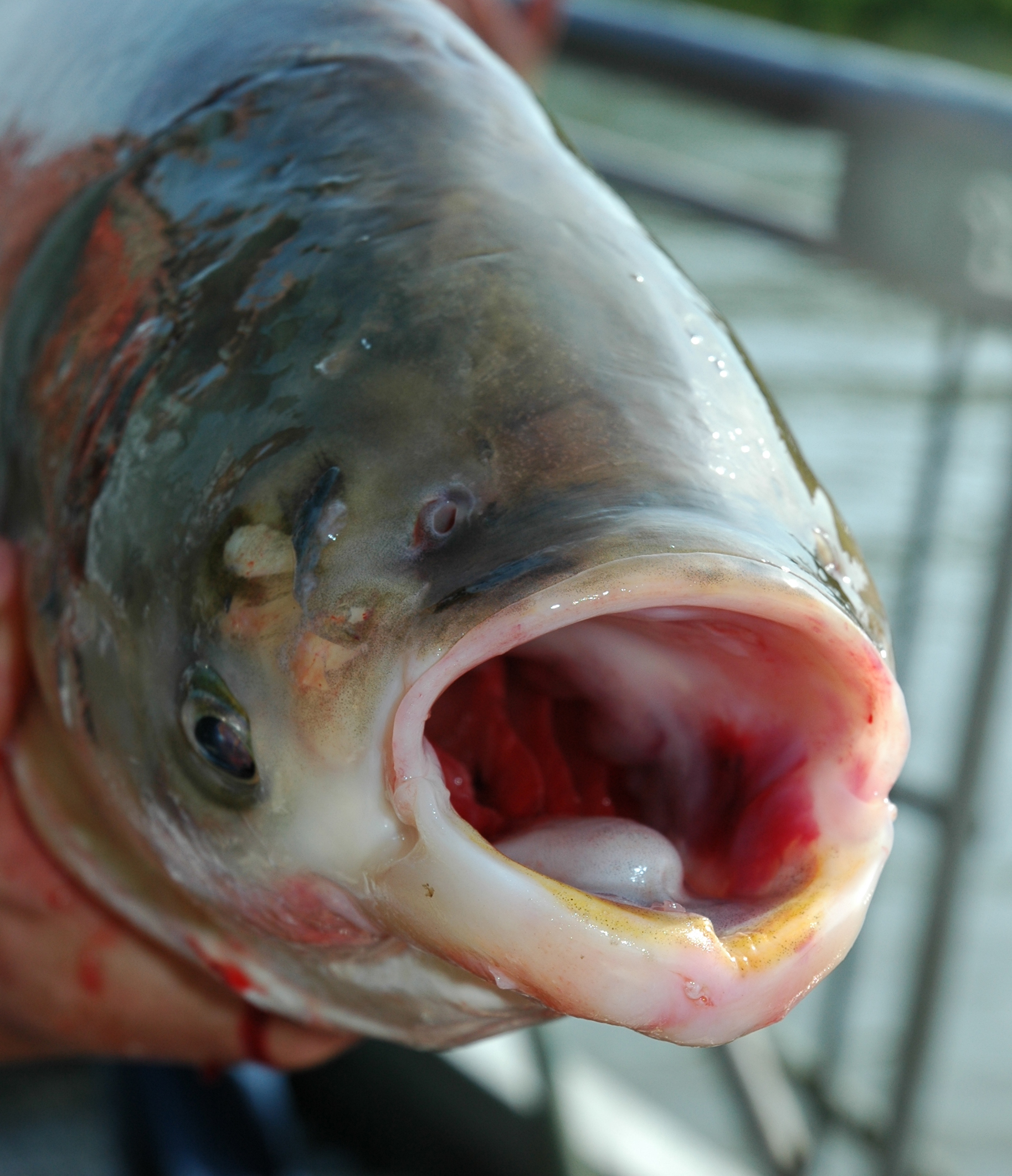 heart is made up of an atrium and ventricle where blood at
low pressure enters through the atrium of the heart and is pumped out of
the ventricle at high pressure. There is another important part to
the closed system; the capillaries. Capillaries are no
larger than the size of a red blood cell and have ultra thin walls to
allow for diffusion of oxygen. This enables body cells to supplied
with extreme precision.
heart is made up of an atrium and ventricle where blood at
low pressure enters through the atrium of the heart and is pumped out of
the ventricle at high pressure. There is another important part to
the closed system; the capillaries. Capillaries are no
larger than the size of a red blood cell and have ultra thin walls to
allow for diffusion of oxygen. This enables body cells to supplied
with extreme precision.
There is an adaptation allowing for improved gas exchange in Bighead carp and many other fish. This adaptation in the gills is known as countercurrent exchange. Countercurrent exchange is where water flows across the gills in one direction, as blood moves through the gills in the opposite direction. This countercurrent flow creates a diffusion gradient where the gas exchange is maximized. As you know gas will move from an area of high concentration to low concentration. In the case of the fish gills the water has a high concentration of oxygen and the blood moving through the capillaries in the gills has a low concentration. This countercurrent flow will always have a higher concentration of oxygen in water than in the blood of the fish so the diffusion of oxygen is maximized. See the graph below to visualize this.
Example of Concurrent Vs. Countercurrent Exchange
Now that you know how Bighead carp obtain nutrients, click here to learn about their reproduction.
